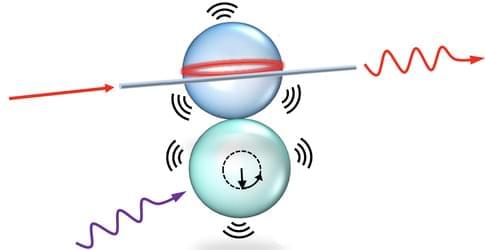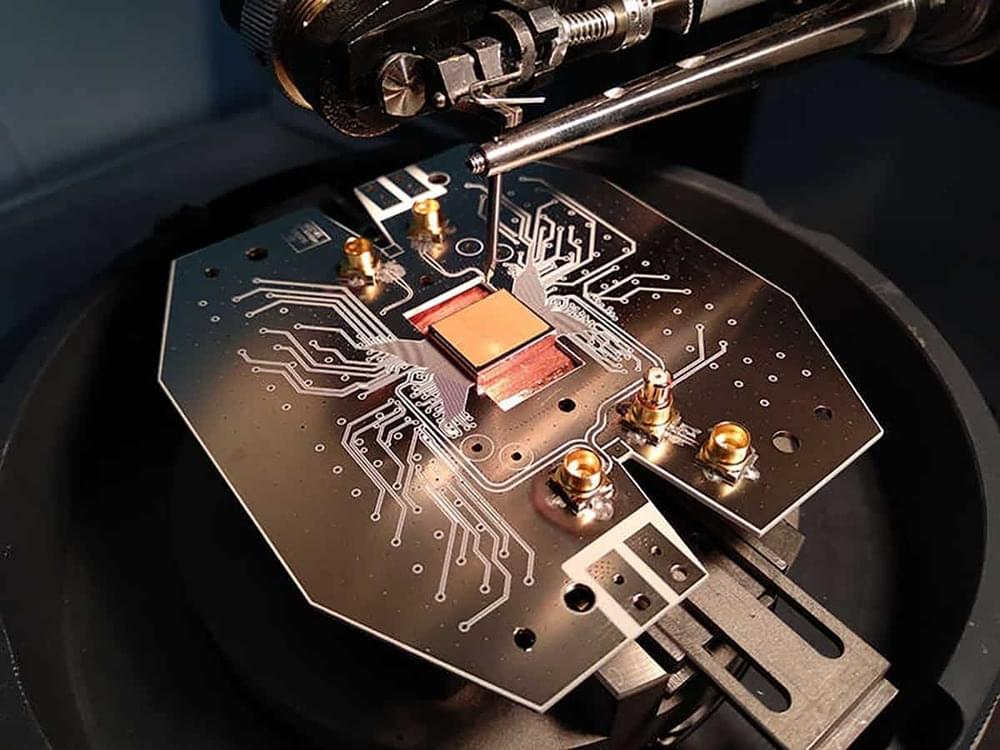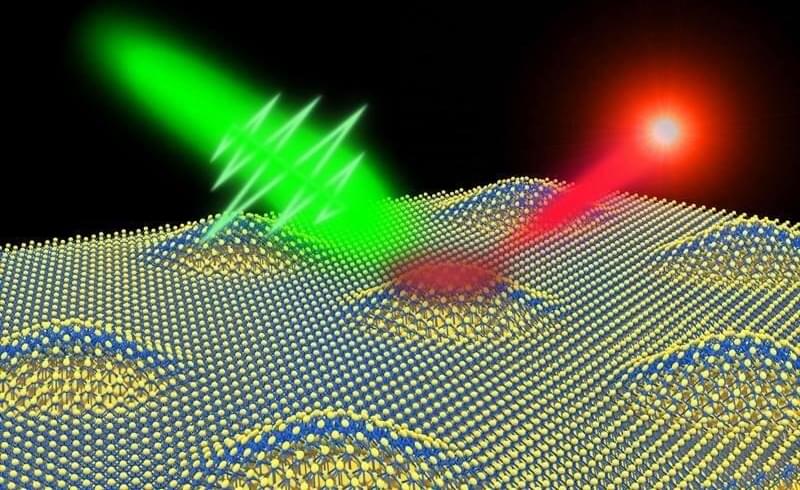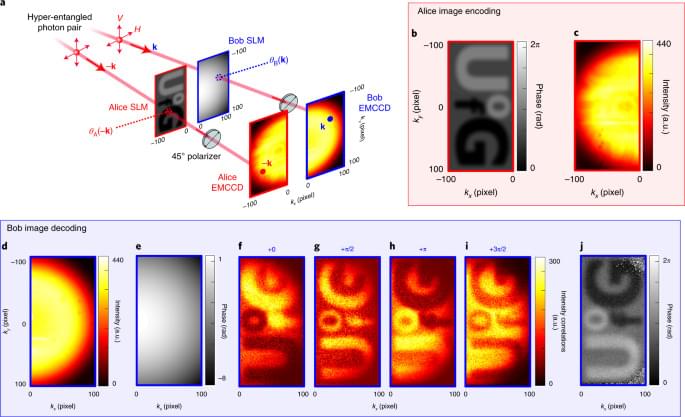Such a device could help address climate change and food scarcity, or break the Internet. Will the U.S. or China get there first?


Interview with Hugo in Melbourne after the Singularity Summit Australia 2010, conducted by Adam A. Ford.
Terrans, Cyborgs and Cosmists — Varieties of human groups. Species dominance.
Bio: Prof. Dr. Hugo de Garis, 63, has lived in 7 countries. He recently retired from his role of Director of the Artificial Brain Lab (ABL) at Xiamen University, China, where he was building China’s first artificial brain. He and his friend Prof. Dr. Ben Goertzel have just finished guest editing a special issue on artificial brains for Neurocomputing journal (December 2010), the first of its kind on the planet.
He continues to live in China, where his U.S. savings go 7 times further, given China’s much lower cost of living. He spends his afternoons in his favorite (beautiful) park, and his nights in his apartment, intensively studying PhD-level pure math and mathematical physics to be able to write books on topics such as femtometer scale technology (“femtotech”), topological quantum computing (TQC), as well as other technical and sociopolitical themes.
He is the author of two books: The Artilect War: Cosmists vs. Terrans : A Bitter Controversy Concerning Whether Humanity Should Build Godlike Massively Intelligent Machines (2005) and Multis and Mono: What the Multicultured Can Teach the Monocultured: Towards the Creation of a Global State (2010). Both these books are concerned with the political consequences of future technologies.
He labels his new lifestyle “ARCing” (After-Retirement Careering), feeling freed from wage slavery, spending (probably) the remaining 30 years of his life pursuing with passion those deep and interesting topics that truly fascinate him, without having to waste huge amounts of time writing an endless stream of relatively unread, un-meaningful, short-horizon scientific papers or research grant proposals just to receive a salary. He feels liberated from all that, and can recommend ARCing to anyone with sufficient savings (i.e… to take up “wage free careering in the third of life”).

A pair of microspheres can convert microwave signals over a wide frequency range into optical signals, which will be essential for future quantum technologies.
Future quantum communication systems will likely use microwaves to transfer information into and out of storage and processing devices but will use lasers to carry information from point to point within an extended network. Now researchers have demonstrated an improved method for converting microwaves to visible light signals by exploiting the way that electromagnetic waves can set up vibrations within microspheres [1]. Two microspheres in contact—one sensitive to microwaves and the other sensitive to optical signals—serve as the core of the converter. The work should give researchers a wider range of technological options as they develop advanced communications and computing networks.
Researchers are pursuing a variety of ways to store quantum information, or “qubits,” in microscopic, typically superconducting, structures. One common feature of such technologies is that reading or writing information relies on interactions with microwaves rather than on higher-frequency visible or infrared light from lasers. But lasers offer the best way to move information around, so extended networks of such devices will need ways to convert signals from one form to the other.

Black holes are known as the most terrifying, mysterious, and fascinating objects in the Universe. Eternally hungry, they eat everything in their path and are constantly expanding. But how small and how big can a black hole be? Unlike stars and planets, black holes have no size restrictions. They grow when they eat the matter around them. Does it mean that they can be not only super large but super small? Let’s find out!
#brightside.
Credit:
Black Hole: By NASA/Goddard Space Flight Center, https://svs.gsfc.nasa.gov/11108
X-ray: By NASA/Goddard Space Flight Center/CI Lab, https://svs.gsfc.nasa.gov/10807
Black Holes: By NASA’s Goddard Space Flight Center, https://svs.gsfc.nasa.gov/13831
Burst: By NASA/Goddard Space Flight Center/Chris Smith (KBRwyle), https://svs.gsfc.nasa.gov/13886
echoes: By NASA/Goddard Space Flight Center, https://svs.gsfc.nasa.gov/12265
star: By NASA’s Goddard Space Flight Center/Chris Smith (USRA/GESTAR), https://svs.gsfc.nasa.gov/13805
stellar: By NASA’s Goddard Space Flight Center/Chris Smith (USRA/GESTAR), https://svs.gsfc.nasa.gov/13805
Suzaku: By NASA’s Goddard Space Flight Center, https://svs.gsfc.nasa.gov/11821
Star Formation: By NASA, https://commons.wikimedia.org/w/index.php?curid=19412899
Flare: By NASA/JPL/Caltech/Abhimanyu Susobhanan.
Disk Flare: By NASA/JPL-Caltech, https://photojournal.jpl.nasa.gov/catalog/PIA23687
Quasar: By NASA/CXC/M. Weiss.
CC BY-SA 4.0 https://creativecommons.org/licenses/by-sa/4.0:
Supermassive: By Quantum squid88, https://commons.wikimedia.org/w/index.php?curid=87860610
Ton618: By Pablo Carlos Budassi, https://commons.wikimedia.org/w/index.php?curid=94445949
CC BY 4.0 https://creativecommons.org/licenses/by/4.0:
Sgr A: By EHT Collaboration, https://commons.wikimedia.org/w/index.php?curid=117933557
Messier 87: By Event Horizon Telescope, https://commons.wikimedia.org/w/index.php?curid=77916527
M87: By Event Horizon Telescope, https://commons.wikimedia.org/w/index.php?curid=102736603
ULAS J1120+0641: By ESO/M. Kornmesser, https://commons.wikimedia.org/w/index.php?curid=15700804
Jets: By ESO/WFI — https://flic.kr/p/9KgqiH, https://commons.wikimedia.org/w/index.php?curid=34550695
3C 273 Jet: By Pelligton, https://commons.wikimedia.org/w/index.php?curid=123362359
Animation is created by Bright Side.
Music by Epidemic Sound https://www.epidemicsound.com.
Check our Bright Side podcast on Spotify and leave a positive review! https://open.spotify.com/show/0hUkPxD34jRLrMrJux4VxV

In the cons column, quantum computers are hard to use, require a very controlled set up to operate, and have to contend with “decoherence” or losing their quantum state which gives weird results. They’re also rare, expensive, and for most tasks, way less efficient than a traditional computer.
Still, a lot of these issues can be offset by combining a quantum computer with a traditional computer, just as VTT has done. Researchers can create a hybrid algorithm that has LUMI, the traditional supercomputer, handle the parts it does best while handing off anything that could benefit from quantum computing to HELMI. LUMI can then integrate the results of HELMI’s quantum calculations, perform any additional calculations necessary or even send more calculations to HELMI, and return the complete results to the researchers.
Finland is now one of few nations in the world with a quantum computer and a supercomputer, and LUMI is the most powerful quantum-enabled supercomputer. While quantum computers are still a way from being broadly commercially viable, these kinds of integrated research programs are likely to accelerate progress. VTT is currently developing a 20-qubit quantum computer with a 50-qubit upgrade planned for 2024.

A large universal quantum computer is still an engineering dream, but machines designed to leverage quantum effects to solve specific classes of problems—such as D-wave’s computers—are alive and well. But an unlikely rival could challenge these specialized machines: computers built from purposely noisy parts.
This week at the IEEE International Electron Device Meeting (IEDM 2022), engineers unveiled several advances that bring a large-scale probabilistic computer closer to reality than ever before.
Quantum computers are unrivaled for any algorithm that relies on quantum’s complex amplitudes. “But for problems where the numbers are positive, sometimes called stochastic problems, probabilistic computing could be quite competitive,” says Supriyo Datta, professor of electrical and computer engineering at Purdue University and one of the pioneers of probabilistic computing.

The ability to integrate fiber-based quantum information technology into existing optical networks would be a significant step toward applications in quantum communication. To achieve this, quantum light sources must be able to emit single photons with controllable positioning and polarization and at 1.35 and 1.55 micrometer ranges where light travels at minimum loss in existing optical fiber networks, such as telecommunications networks. This combination of features has been elusive until now, despite two decades of research efforts.
Recently, two-dimensional (2D) semiconductors have emerged as a novel platform for next-generation photonics and electronics applications. Although scientists have demonstrated 2D quantum emitters operating at the visible regime, single-photon emission in the most desirable telecom bands has never been achieved in 2D systems.
To solve this problem, researchers at Los Alamos National Laboratory developed a strain engineering protocol to deterministically create two-dimensional quantum light emitters with operating wavelength tunable across O and C telecommunication bands. The polarization of the emissions can be tuned with a magnetic field by harnessing the valley degree of freedom.

